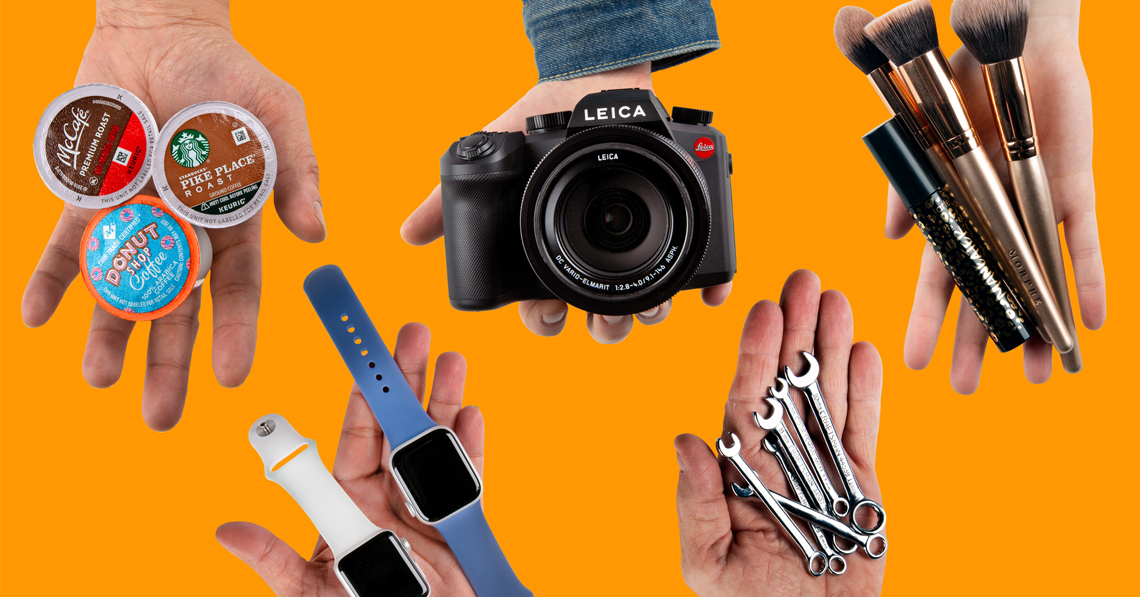Influencer marketing has become a digital monster. Are you doing it? Are you doing it wrong? Should you be doing it at all? If so, how and under what circumstances? In this edition of the Plain Talk series, we’ll take some of the mystery out of influencer marketing and dispel a few myths along the way. First, let’s talk about the money.
How big is the influencer marketing business?
Today, influencer marketing is an $8 billion industry and is forecasted to be $15 billion by 2022 according to a recent study by MediaKix and Business Insider Intelligence. That’s $15 billion with a B. How big is that? Influencer marketing as a medium is as large as out-of-home ($8 billion), larger than newspapers ($7.96 billion), magazines ($7.45 billion), and is on track to surpass broadcast radio ($14.43 billion) in the next few years. So with all that money being spent on influencers, what do you need to know?
The origins of influencer marketing
Let’s start with origins. While online influencers first appeared in the early 2000s in the form of mommy bloggers and the like, influencer marketing is not new. In modern history, we’ve generally thought of most influencer marketing as “paid endorsement,” typically a celebrity being paid to say (truthfully or not) that they use a product and that you should too. There are a million famous examples of this in the annals of advertising history- actor Karl Malden and American Express Travelers Checks, Michael Jackson and Pepsi, early 2000s Terri Hatcher and Howie Long for Radio Shack, and today’s Samuel L. Jackson and Jennifer Garner endorsements for Capital One.
In addition to celebrity endorsements, smart, budget-savvy brands often invented their own “influencers” or borrowed them. Coke famously introduced Santa Claus as a spokesperson with their holiday advertisements. Kellogg introduced Tony the Tiger for their Frosted Flakes brand, P&G introduced Aunt Jemima for pancakes, General Mills had Betty Crocker, and so on. Both the celebrity and created character endorsement strategies, of course, continue today.
Authenticity and “influencing the influencers”
In the 1990’s something happened. Young consumers began to become increasingly skeptical about how seriously they took traditional paid endorsements. In the brief hinterland between the infancy of the internet and the explosion of social media, roughly 1995 to 2005, an innovative group of experiential marketers and PR folk reinvented endorsement marketing with the idea that brands could “influence the influencer.” Trailblazers like Michael Blatter and Tony Duffy, leveraged their experience and insight into the American sub-cultures that drove consumer tastes and trends for Gen X in areas like music, fashion, and nightlife. They and the other pioneers who created modern influencer programs knew that the real influencers were not just rock and movie stars, but local show producers, bartenders, boutique owners, street artists, DJs, club owners, and restauranteurs. These were the grassroots lifeblood of cultural creativity.
Experiential influencer marketers operated under the mantra “support the brand that supports your scene.” These were extremely collegial, high touch relationships with taste-makers. They used the word “authentic” as a critical litmus test for anything they did lest they upset their place in the fragile ecosystem of organic American culture. It’s important to note that these influencer relationships involved transactions but were not transactional. First and foremost, brands were a fit for the influencer and the influencer for the brand, and transactions took wildly creative forms that influencers valued and that enhanced local cultural scenes. Things like delivering famous DJs to small markets where they’d never spun, touring drag legends to clubs around the country, Bartenders Ball, a national series of bartender-exclusive concert events. Every experience was an on-point relationship builder between brand ambassadors and influencers who knew each other by name.
And they worked. Brands like Red Bull, Grey Goose and others, saw massive growth riding the wave of authentic contributions to their cultural gatekeepers.
Social influencers and the magic of scale
Many early experiential influencer programs were successful but one challenge they faced was scale. These programs often focused on influencers in major markets (New York, San Francisco, LA, Miami, Dallas, Chicago) as places from which trends spread nationally. Other programs with deeper pockets, included regional influencer markets like Austin, Charlotte, Atlanta, and Portland, but scale remained a challenge. That’s why influencer marketers immediately saw the value that the new social media channels of the mid-00’s offered. Social media created a way to share local experiences to both local and national audiences while “celebritizing” unique individuals who may have otherwise not had access to a national audience. It was the perfect enhancement to what they were already doing. And it worked. Gen Xer’s and the emerging generation of millennials outside of core influencer markets received instant access to cool ideas and trends that used to take months or years to filter out to them. And as the number of adults on social media exploded, users were hungry for more.
Social influencers today
Today, much of what you hear about influencer marketing probably revolves around names like Kylie Jenner, Selena Gomez, Kim Kardashian West, Beyoncé or some other ultra-famous entertainer, pro athlete or famous-for-being-famous celeb. However, depending on what brand you represent these influencers may not be right for you. And even if they are right for your brand, they may not be within reach. For example, Allure reported that one Instagram endorsement post from Kylie Jenner costs marketers $1.2 million. One post. So is influencer marketing right for your brand? Maybe. To figure that out, let’s first look at some of the myths surrounding the influencer channel.
Myth 1 – Influencer marketing is just for teen and fashion brands.
Many people equate influencer marketing with one or more Kardashians. For good reason of course, they are pretty influential but if you’re in the aftermarket truck parts business, it’s a certainty that no Kardashian can help you move more inventory. So is influencer marketing for you? Maybe. Any highly respected professional in any industry is basically an influencer. PW has helped businesses conduct influencer marketing by co-authoring relevant content and white papers by respected professionals in many fields- aftermarket truck parts, agribusiness, banking and others. The key is always to find the right influencer and offer content that is relevant and useful.
Myth 2 – Influencer marketing is too expensive for me.
Because of Myth 1 and the riches that flow freely to the Kardashians of the world for their endorsements, many marketers believe that influencer marketing is cost prohibitive. While Selena Gomez and Beyoncé may be out of reach for most brands, the fact is that many professionals in your industry are extremely approachable, affordable, and open to collaboration. In fact, the right influencer with passion for your brand might even be willing to collaborate with you for free! This can make influencer marketing both an affordable and effective layer to your marketing plan.
Myth 3 – You can’t prove that influencer marketing works.
Attribution. The ability to attribute a marketing ROI to a specific tactic or strategy. What could be sexier than that? And attribution is all the rage with savvy marketers today. Is attribution possible with influencer marketing? Absolutely. Here’s why. Much influencer marketing today is communicated efficiently through digital channels like social media, native content, and email. Like with any medium, the key to effective attribution is to have a plan. Once you’ve found the right influencer(s) for your brand, work with your internal team or agency partners to develop and implement an attribution strategy that will allow you to calculate your return on investment. Digital tracking mechanisms can make this pretty simple. If your influencer is working with you outside of digital channels (maybe they are a keynote speaker at your event) work within your available data set (attendees, lead capture and your sales funnel) to track the impact of your influencer content and engagement with your customers.
A word about micro- and nano- influencers
What if your brand is a consumer brand? The kind of brand for whom a major celebrity would be a perfect fit. Does your less-than-gigantic budget mean that you can’t participate effectively in influencer marketing? Not at all. Many marketers are turning to lesser known but highly credible micro- or nano-influencers. These influencers have between 1,000 and 50,000 followers (some say up to 100,000), who are super-niche and are highly engaged. This can be a big advantage for your brand when you combine hyper-targeted, high-engagement audiences with low post costs. And while you may need to work with multiple micro-influencers to achieve your desired level of scale, you’ll likely benefit from higher local relevance in your target markets. Lower cost per engagement and higher relevance will ring the cash register backed by a solid ROI.
Another consideration is that micro-influencers come in virtually all kinds from business influencers to those for consumer brands. That means B2B brands need not feel excluded from the influencer channel and the revenue benefits that can be achieved.
If you’d like additional credibility in your marketing mix with key customers, considering adding a well-planned micro-influencer program into your mix may be just the ticket. If you have any questions or would like to learn more about how to create an influencer strategy that’s custom to your business, please give us a call at 502-499-4209 or contact us here and we’ll be happy to help.


